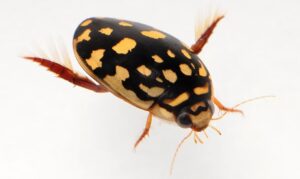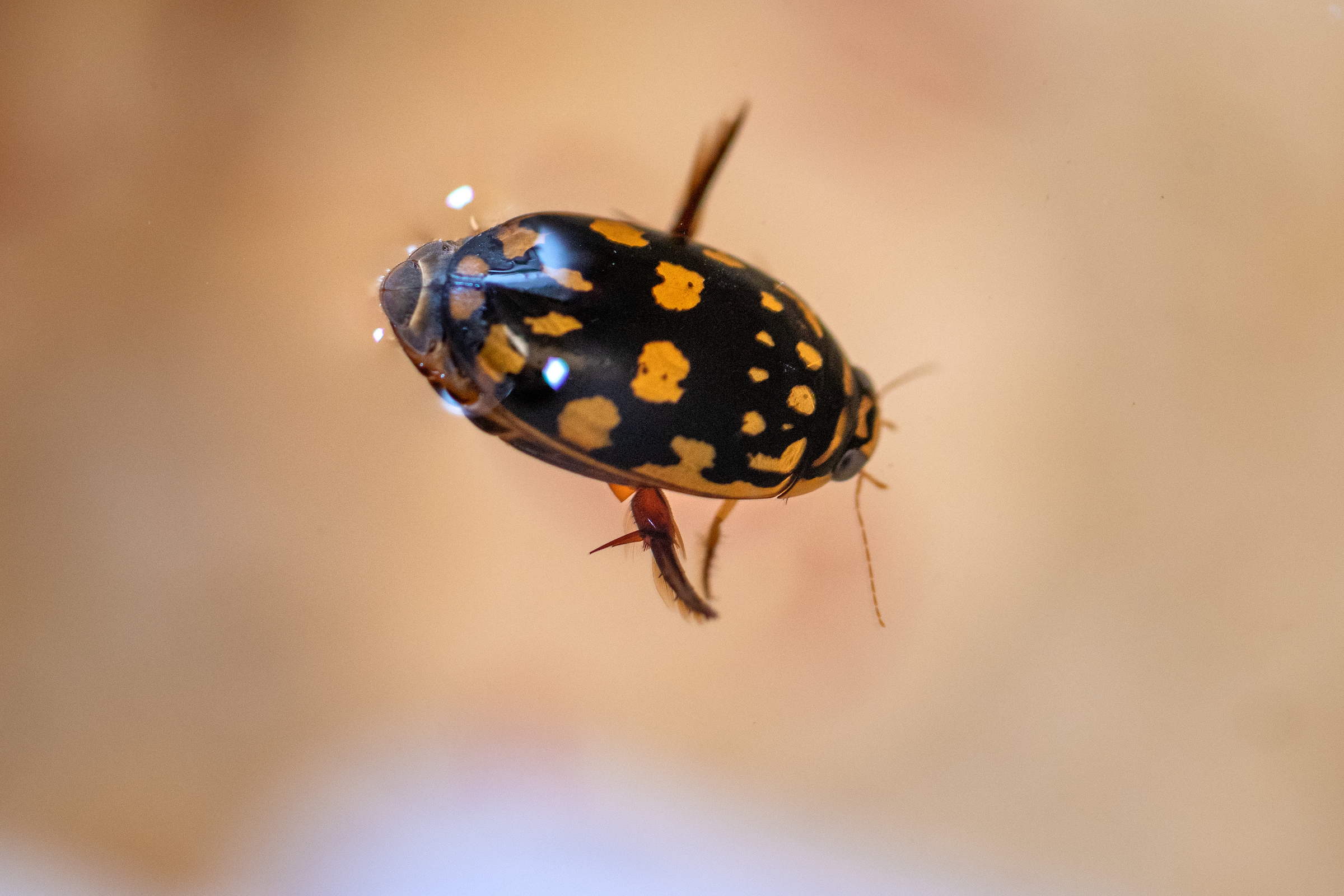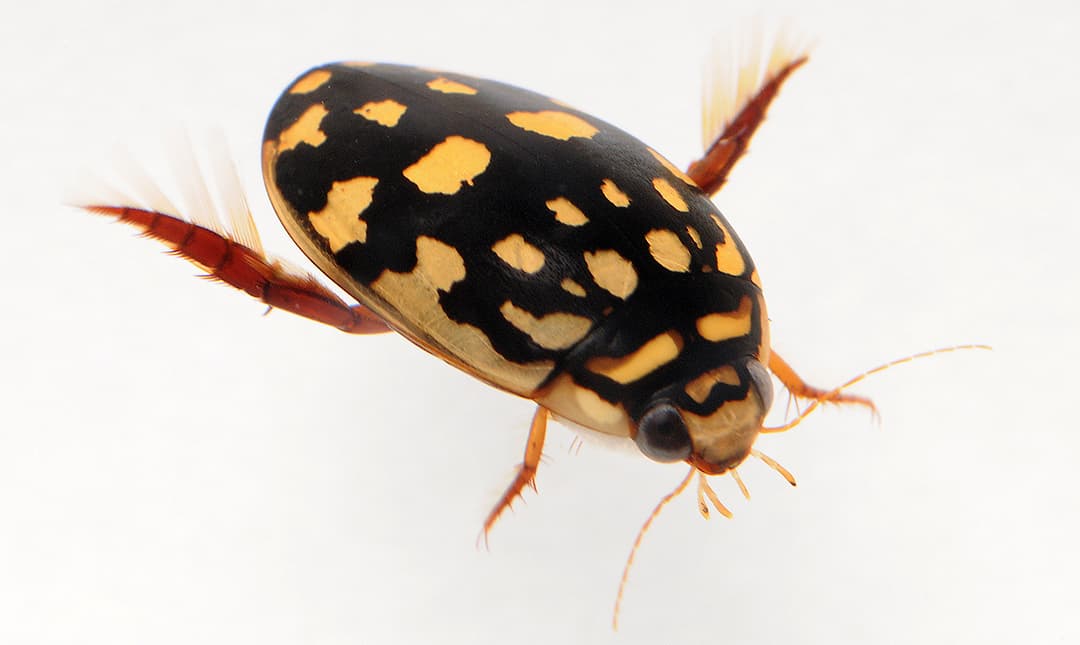About
Much like a scuba diver, the sunburst diving beetle carries a store of oxygen with it in an air bubble just below its wings. The bubble allows it to dive for long periods while foraging for food before surfacing to breathe. Large rear legs are used like oars to propel through the water, and short front legs are used to steer. Fringes on their legs help them float. After mating, female beetles lay their eggs on aquatic plants, but after developing in water, the larvae pupate into adults on dry land. These all-terrain beetles are also strong fliers, so if their pond dries up, they fly away to find a new home, sometimes in a bird bath or a swimming pool.
This beetle has aposematic or warning colors. Its black body with bright yellow spots resembling a sunburst is a signal that predators should beware. While not poisonous, these beetles can eject a foul-tasting chemical from glands on their heads to fend off fish, frogs, and predatory insects. Sunburst diving beetles live in small colonies. They play an important role in controlling populations of mosquitos, which spend the first stages of their lives in water. Though the sunburst diving beetle spends the majority of its life in the water, it hatches from eggs that have been laid in the sand.


Habitat
This beetle is found in freshwater ponds in the Sonoran Desert in Southern California, Arizona, New Mexico, Texas, and Mexico.
Diet
These tiny carnivores consume mosquito larvae and other invertebrates.
Physical Characteristics
The sunburst diving beetle grows up to half an inch in length. Lifespan in the wild is unknown, but in human care it can live 2 to 3 years.
LOCATION WITHIN THE ZOO
You’ll find this animal in the Desert LAIR. See Zoo Map.



